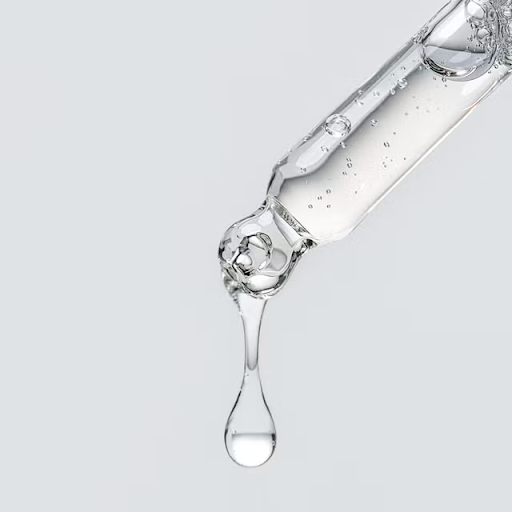
If you’re here, chances are your skin might be sending you an SOS signal using a tirade of clogged pores, unexpected breakouts, or a shiny T-zone that is just refusing to chill. That or, you’re just curious.
Enter salicylic acid, a skincare ingredient that’s been saving oily and acne-prone skin for decades and is always involved in the conversation whenever skincare is mentioned. We have face washes, serums; it’s one of the most popular beta hydroxy acids (BHAs) in skincare, and for good reason. It goes deep, unclogs pores, and keeps breakouts away.
Doesn’t matter where you’ve seen it, product label or heard it buzzing in beauty circles, if you’re wondering: what exactly does salicylic acid do? We break it down here.
What Is Salicylic Acid?
Salicylic acid is a beta-hydroxy acid (BHA), meaning it’s oil-soluble and can penetrate deep into your pores. It’s often derived from willow bark and included in gels, creams, lotions, cleansers, and spot treatments. Unlike alpha hydroxy acids (AHAs), which work on the skin’s surface to improve texture and tone, BHAs like salicylic acid target the oily buildup inside pores, making them ideal for acne-prone and combination skin.
Beyond skincare, salicylic acid is also used medicinally to treat conditions like warts, psoriasis, calluses, and corns. It works by softening and removing thickened skin layers, helping your skin renew itself more efficiently.
Read Also: What Does Glycolic Acid Do? The Skincare Superstar Explained
Key Benefits of Salicylic Acid
1. Deep Cleans and Unclogs Pores
Excess oil and dead skin cells are the main culprits behind blackheads and breakouts. Salicylic acid dissolves the sebum buildup in pores, keeping them clear and reducing the chance of pimples. Using a daily salicylic acid cleanser helps control shine and prevent acne flare-ups.
2. Reduces Future Breakouts
By keeping pores clear, salicylic acid reduces the chances of future breakouts. Its anti-inflammatory and antibacterial properties also fight acne-causing bacteria, providing an added layer of defence.
3. Mild Exfoliation
At higher concentrations, salicylic acid gently peels away dead skin cells without harsh scrubbing, leaving your skin smoother. It helps smooth rough patches and enhances overall skin texture.
4. Treats Acne Scars and Dark Spots
Regular use can gradually fade post-acne marks. By encouraging cell turnover, salicylic acid replaces dull, pigmented skin with fresher layers, improving tone and texture.
How to Use Salicylic Acid
Salicylic acid comes in cleansers, toners, creams, serums, and spot treatments, typically in 0.5%–2% concentrations for over-the-counter products.
-
Apply to clean, dry skin: Rub a thin layer of cream or lotion, swipe liquids with a cotton pad, or pat serum gently.
-
Frequency: Depending on your skin type, daily use or 2–3 times a week is common.
-
Moisturise: Salicylic acid can be drying, so pair it with an oil-free moisturiser.
-
Sun protection: Always use sunscreen (SPF 25+) as BHAs increase sun sensitivity.
For combination skin, salicylic acid may work better on oilier areas, like the T-zone, and less on dry patches. It should be your spot hero rather than a full-face powerhouse.
Potential Side Effects
Salicylic acid is generally considered safe when used as directed, but it’s not without its quirks. Some users experience mild dryness, redness, or peeling, especially during the first few weeks of use, as the skin adjusts to the exfoliating action.
Occasional tingling or stinging is normal, but persistent irritation or hives should prompt a pause in use and consultation with a dermatologist. Overuse or very high concentrations can worsen sensitivity, so it’s important to start with a lower-strength product and monitor how your skin responds.
Who Should Use Salicylic Acid
Salicylic acid works best for people with oily or combination skin, particularly those prone to blackheads, whiteheads, or inflammatory acne. It’s often a go-to for teenagers and adults struggling with clogged pores or excess sebum.
Those with very dry, sensitive, or compromised skin may find it too harsh if applied broadly, so targeted or lower-strength applications are recommended.
Pregnant or breastfeeding individuals, young children, or people with certain medical conditions, such as diabetes, liver or kidney issues, should check with a healthcare professional before using products containing salicylic acid, especially when treating warts or thickened skin.
Salicylic Acid vs. Other Acids
Salicylic acid belongs to the beta hydroxy acid (BHA) family, which sets it apart from alpha hydroxy acids (AHAs) like glycolic or lactic acid. Its oil-soluble nature allows it to penetrate deep into pores, clearing out excess oil and debris, which makes it particularly effective for acne-prone and combination skin.
AHAs, on the other hand, are water-soluble and primarily work on the skin’s surface, improving texture, brightening, and addressing early signs of ageing. While salicylic acid can be paired with other active ingredients such as niacinamide or hyaluronic acid to boost hydration and calm irritation, careful timing is important when combining it with retinoids or vitamin C to prevent over-exfoliation or redness.
Salicylic acid is a versatile skincare hero for anyone dealing with oily or acne-prone skin. By understanding your skin type and using it sensibly, you can make salicylic acid a reliable part of your routine.








